基于PLC和WinCC的空调温湿度自控系统的设计
来源:wenku163.com 资料编号:WK1639268 资料等级:★★★★★ %E8%B5%84%E6%96%99%E7%BC%96%E5%8F%B7%EF%BC%9AWK1639268
资料介绍
基于PLC和WinCC的空调温湿度自控系统的设计(含任务书,开题报告,外文翻译,毕业论文说明书22000字,进度检查表)
摘 要
为了提高空调温湿度的控制精度,本文介绍了一种基于PLC和WinCC的空调温湿度自动控制系统的方案。本文系统的介绍了PLC的特点、功能及相关技术。通过介绍WinCC+S7-200温度控制系统软硬件构成及其特点,详细论述了PLC和WinCC如何实现空调温度的监控。另外,本文的程序设计采用的是PID控制,PID在这个系统中占据着举足轻重的地位,在过程控制中,PID 控制也是应用最广泛的,一个大型现代化控制系统的控制回路可能达二三百个甚至更多,其中绝大部分都采用 PID 控制。由此可见,在过程控制中,PID 控制的重要性是显然的。
实践证明,此控制系统提高了温湿度的控制精度,降低了工人的劳动强度和运行成本,完善了控制和管理功能。
关键词:空调温湿度;自动控制;PLC;WinCC;PID控制
Abstract
In order to improve the control accuracy of air humidity, this paper recommends a temperature and humidity air conditioning automatic control system based on PLC and WinCC project.This article systematically introduced characteristics of PLC, function and related technology.By introducing the WinCC + S7-200 temperature control system hardware and software composition and characteristic of PLC and WinCC is discussed how to realize the air conditioning temperature monitoring. In addition, in this paper, the program design is used in PID control, PID in the system occupies a pivotal position, in process control, PID control is the most widely used, and a large modern control loop of the control system could reach ErSanBaiGe even more, most of them are using PID control.Thus,in process control,the important of PID control is obvious.
Practice has proved that this control system improves the control precision of the temperature and accuracy, reduced the labor intensity of workers and running cost, improve the control and management functions.
Key words: air conditioning temperature and humidity;automatic control; PLC; WinCC; PID control
研究内容
① 熟悉PLC的发展历程,特别是自60年代以来,汽车制造业,传统继电接触器控制装置广泛应用于生产流水线的自动控制系统中;
② 熟练掌握PLC编码的原理以及S7-200编码的原理和方法;
③ 初步了解WinCC软件以及其发展历程;
④ 掌握PPI变换的原理、性质以及它为何一般作为主设备的性能评价标准的理由;
⑤ 能够熟练的识别PID符号。针对相关的内容能够设计出相应的程序,用客观标准和主观标准综合评价设计出的程序;
⑥ 熟练使用S7-200编程软件的使用方法及符号的意义。
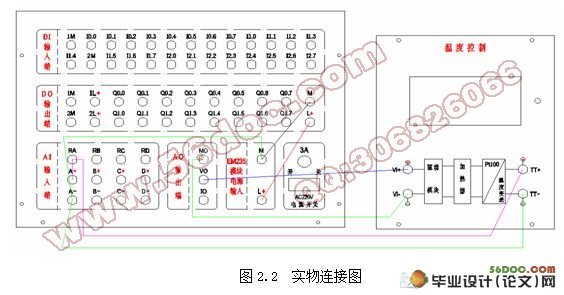
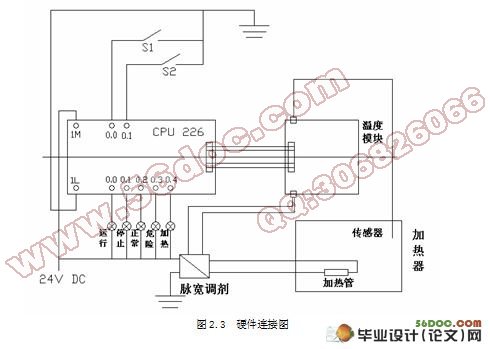
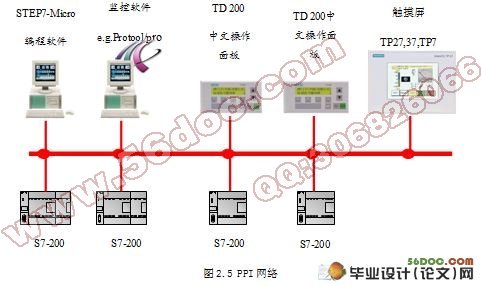
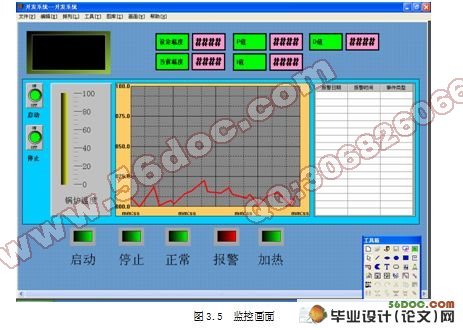
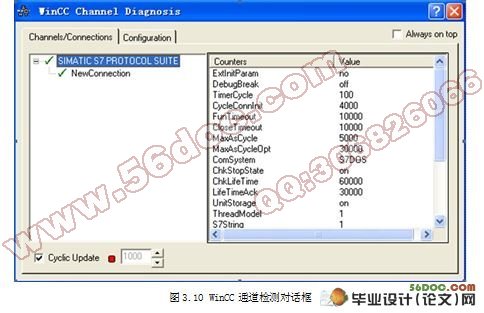
目 录
摘 要 III
ABSTRACT IV
目 录 V
1 绪论 1
1.1 本课题的研究内容和意义 1
1.1.1 温度及湿度控制系统的意义 1
1.1.2 温湿度控制系统背景 1
1.2 研究技术介绍 1
1.2.1 传感技术 1
1.2.2 PLC 2
1.2.3 上位机 2
1.2.4 组态软件 2
1.3 研究背景 3
1.3.1 功能特点与技术参数 3
1.3.2 控制手段 4
1.4国内外的发展概况 4
1.4.1 国内外实例 4
2 方案设计 6
2.1 现场总线概述 6
2.2 WINCC+S7-200温度控制系统的硬件组成 8
2.2.1 传感器 9
2.2.3 I/O分配表 10
2.2.4 硬件接线图 11
2.3 WINCC+S7-200温度控制系统的软件配置 12
2.4 WINCC+S7-200温度控制系统的网络结构 16
2.5 温度控制算法 17
2.5.1 PID控制程序设计 17
2.5.2 PID在PLC中的回路指令 18
2.5.3 回路输入输出变量的数值转换方法 19
2.5.4 实数归一化处理 19
2.5.5 PID参数整定 20
2.6 S7-200程序设计流程图 21
2.7 内存地址分配与PID指令回路表 22
2.7.1 内存地址分配 22
2.7.2 PID指令回路表 22
2.8 S7-200程序设计梯形图 22
2.8.1 初次上电 22
2.8.2 启动/停止阶段 23
2.8.3 子程序 24
2.8.4 中断程序,PID的计算 25
3 组态编程 27
3.1 PLC通信配置与通信方式 27
3.1.1 串行数据传送和并行数据传送 27
3.1.2 异步方式与同步方式 27
3.2 网络的通讯PPI协议 27
3.3 组态软件KINGVIEW 28
3.4 组态王定义外部设备和数据变量 28
3.4.1 外部设备的定义 28
3.4.2 定义数据变量 28
3.4.3 数据类型 30
3.5 组态王界面 30
3.5.1 温度控制主界面 30
3.6 启动组态王 30
3.6.1 初次上电 30
3.6.2 启动 31
3.6.3 停止 32
3.6.4 报警 32
3.7 程序调试 32
3.7.1 PLC程序调试方法与结果 33
3.7.2 WinCC组态调试方法与结果 33
4结论与展望 35
4.1 结论 35
4.2不足之处及未来展望 35
致 谢 36
参考文献 37
|











